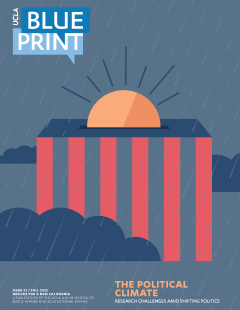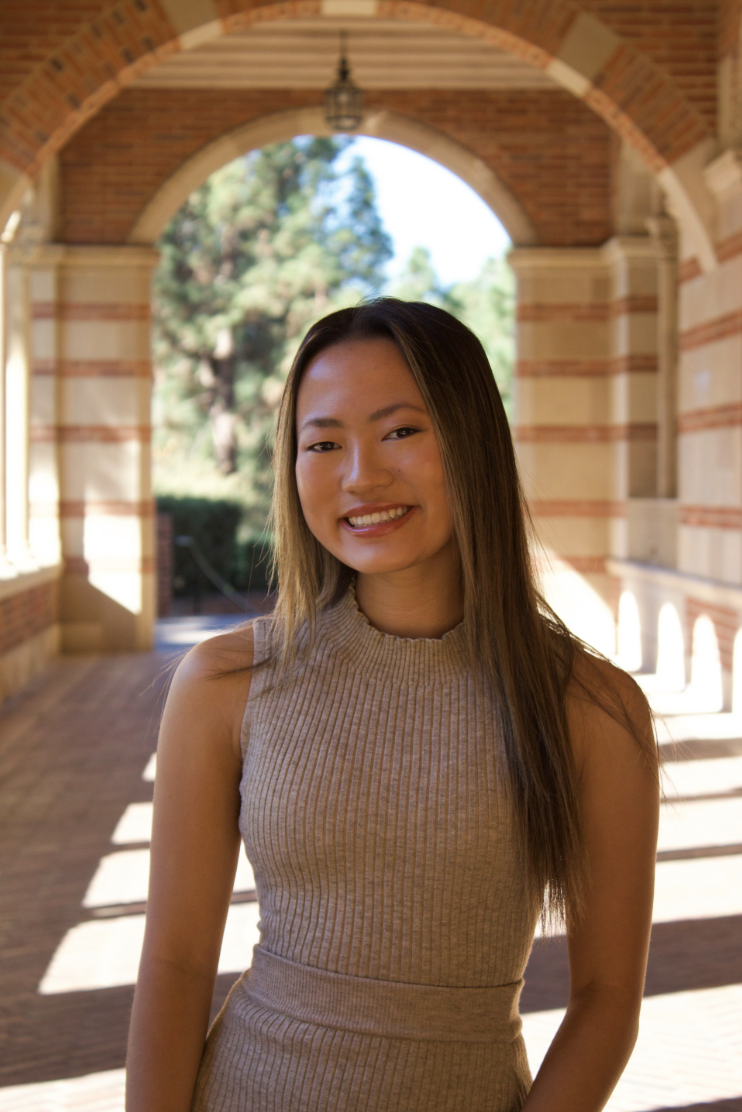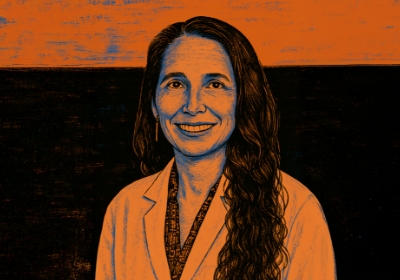The dust. That was the first thing I noticed at Manzanar. It rose in waves, clinging to surfaces. It coated my lavender shoes in a fine, chalky film. My hands searched for my sun- glasses — not because of the sun’s glare but because, without them, the grit stung my eyes. Tumbleweeds floated along the gravel path. Their rootlessness reminded me of the families who once lived here: behind barbed fences and beneath watch- towers, displaced and disoriented, imprisoned in exile.
Around me, thousands gathered — Obachans in folding chairs, college students with garlands of paper cranes, activists lifting handmade signs. And then there were descendants whose family stories were featured at the 56th annual Manzanar Pilgrimage. I was one of those.
My grandfather was just a boy when the U.S. government uprooted him and his family to a place just like this. At 10 years old, he was just one of the 120,000 Japanese Americans forcibly incarcerated during World War II. For most of my childhood, he rarely spoke of that experience. Instead, the pauses between stories housed these memories, folded like origami artifacts nestled among sepia-toned albums.
Two years ago, I finally sat down with my grandpa. I stared as he opened a discolored box with frayed edges. He carefully laid out its contents. Dusty photographs and newspaper clippings with headlines such as “The Camp Connections: Rohwer and Jerome” scattered across the oak table between us. On the back of one washed-out photo, “3211-E” appeared in black ink. It was the identification number the U.S. government used to label my grandfather. Peering at that number, my grandpa held his breath. “When the war started on December 7th, my dad and I were at the playground,” he began.
This April, standing before the white obelisk during the pilgrimage, where the words “Soul Consoling Tower” were etched in Japanese, I imagined his journey as a child in exile. My thoughts drifted back to our conversation a few years ago. He revealed how his father worked for the Consulate General of Japan. “Right away, he was picked up … that night of December 7th,” he said. “That evening, he was shipping to a reloca- tion camp. … We didn’t see my dad for over a year.”
Scanning the scene on that wind-filled day at Manzanar, I noticed the dry bones of the barracks. They creaked in the wind, weathered and skeletal. This echo was a lament — a necessary reminder that this place is not a ruin. It breathes. It reminds. Like my grandpa, it resists erasure.
That essence of collective witnessing struck me most during the time at Manzanar. Survivors, activists and college students spoke. They raised their voices above the wind and lit upon a truth: Injustice is not a mere relic. “We cannot stand by as our history is erased … as our history is repeat- ed,” Dr. Satsuki Ina, the event’s keynote speaker, said. The value of my grandfather’s old newspaper clippings is as more than a reminder of the past. Each inscription, photograph or testimony high- lights the nature of oppression. My grandfather’s words go beyond just being an individual story. They are part of a pattern. Eighty years after the camps closed, we are living inside their repetition.
Today, President Donald Trump evokes the Alien Enemies Act, the very law written in 1798 that gave the U.S. government the legal authority to imprison Japanese Americans during WWII. The current administration utilizes the same law that imprisoned my grandfather to remove men and women from this country. The government has already begun sweeping deportations of immi- grants. After returning from Manzanar, I flicked open my Apple News app. It was never clearer. The scaffolding that imprisoned my grandfather in 1943 is being unearthed — not by accident but by strategic design.
That pilgrimage to Manzanar was a gesture of remembrance, but it also carried another mean- ing. For me, that journey issued a feeling more urgent — a confrontation. A call not to look away. A demand that I not allow myself to close my eyes in fear of the dust.
My grandfather rarely spoke of what happened. When I finally asked him about his incarceration, I began to understand that silence. “We stayed at the bottom of the ship,” he said, opening up about his journey to Jerome, Arkansas, from Honolulu, Hawaii. “At night, we heard the rats running.”
Struggle followed my grandfather after the war. Like thousands of other Japanese Americans, his family lost everything: possessions, home, a sense of self. Upon returning to Hawaii, they found shelter from a local church, which they cleaned to ensure a roof over their heads. “I remember seeing my mom rolling down the hallway with a rag on her knees. It was really hard on her,” my grandpa said. “But we survived.”
“Never again.” Those were the words echoed by the speakers at the 56th Manzanar Pilgrimage. For my grandfather, his considered silence — shield- ing his grandkids from his pain — was not about forgetting. Silence is not the same as absence. It’s weight. It’s inheritance. It’s the dust that coats your shoes.
And so we return. We go back to deserts, to stories, to memory — because history does not repeat itself on its own. It does because we allow it.
























